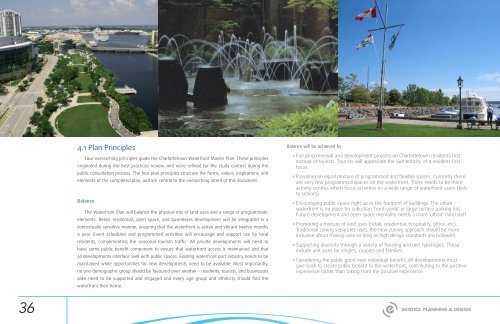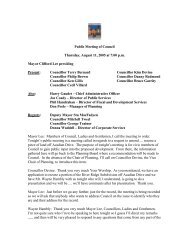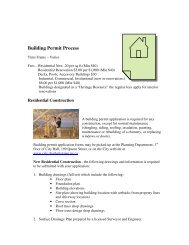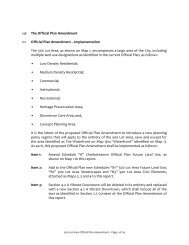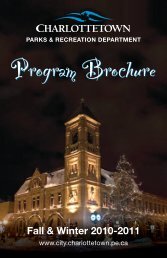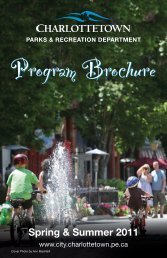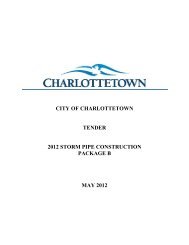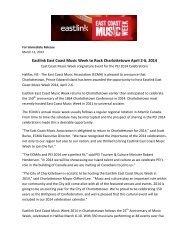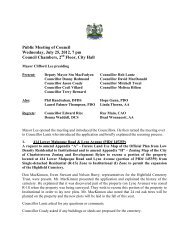Final Report - City of Charlottetown
Final Report - City of Charlottetown
Final Report - City of Charlottetown
- No tags were found...
You also want an ePaper? Increase the reach of your titles
YUMPU automatically turns print PDFs into web optimized ePapers that Google loves.
CITY OF CHARLOTTETOWN: COMPREHENSIVE WATERFRONT MASTER PLAN<strong>Final</strong> <strong>Report</strong> • December 20124.1 Plan PrinciplesFour overarching principles guide the <strong>Charlottetown</strong> Waterfront Master Plan. These principlesoriginated during the best practices review, and were refined for the study context during thepublic consultation process. The four plan principles structure the forms, values, inspirations, andelements <strong>of</strong> the completed plan, and are central to the overarching intent <strong>of</strong> this document.BalanceThe Waterfront Plan will balance the physical mix <strong>of</strong> land uses and a range <strong>of</strong> programmaticelements. Retail, residential, open space, and businesses development will be integrated in acontextually sensitive manner, ensuring that the waterfront is active and vibrant twelve monthsa year. Event schedules and programmed activities will encourage and support use by localresidents, complimenting the seasonal tourism traffic. All private developments will need tohave some public benefit component to ensure that waterfront access is maintained and thatall developments interface well with public spaces. Existing waterfront port industry needs to bemaintained while opportunities for new developments need to be available. Most importantly,no one demographic group should be favoured over another - residents, tourists, and businessesalike need to be supported and engaged and every age group and ethnicity should find thewaterfront their home.Balance will be achieved by:««Focusing renewal and development projects on <strong>Charlottetown</strong> residents firstinstead <strong>of</strong> tourists. Tourists will appreciate the authenticity <strong>of</strong> a resident-firstfocus.««Providing an equal mixture <strong>of</strong> programmed and flexible spaces. Currently thereare very few programmed spaces on the waterfront. There needs to be moreactivity centres which focus activities on a wide range <strong>of</strong> waterfront users (kidsto seniors).««Encouraging public space right up to the footprint <strong>of</strong> buildings. The urbanwaterfront is no place for suburban ‘front-yards’ or large surface parking lots.Future development and open space mentality needs a more ‘urban’ mind shift.««Promoting a mixture <strong>of</strong> land uses (retail, residential, hospitality, <strong>of</strong>fice, etc).Traditional zoning separates uses, the new zoning approach should be moreinclusive about mixing uses so long as high design standards are followed.««Supporting diversity through a variety <strong>of</strong> housing and unit typologies. Theseinclude unit sizes for singles, couples and families.« « Considering the public good over individual benefit. All developments mustgive back to create public benefit to the waterfront, contributing to the positiveexperience rather than taking from the positive experience.36


